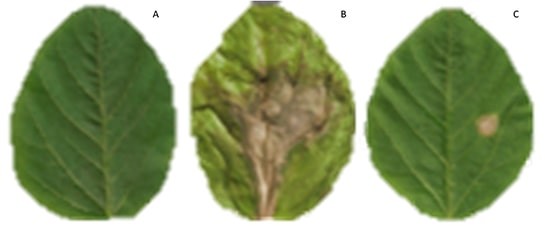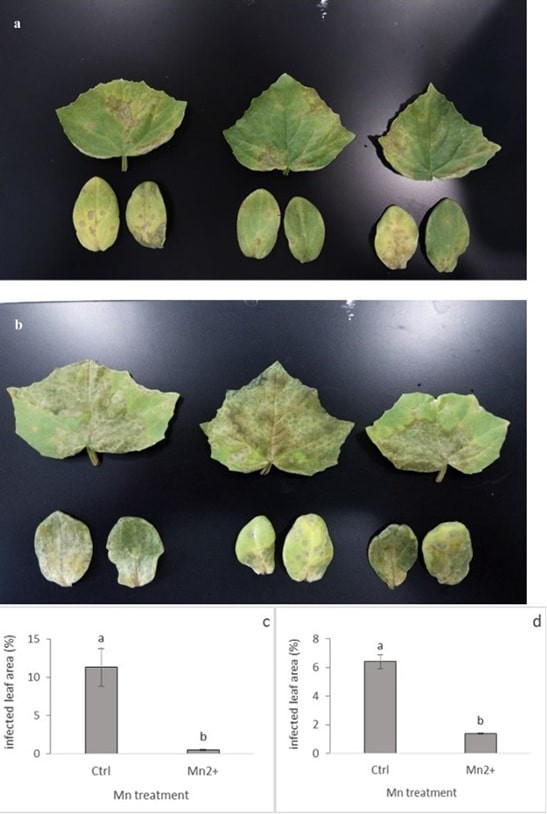The Role of Manganese in Crop Resistance to Disease
Well-balanced nutrition including healthy levels of essential micronutrients like manganese (Mn) plays a key role in a crop’s natural ability to resist diseases. Mn is known as an activator of a crop’s internal defense responses, especially when it comes to root rots. Keep reading to learn more about how manganese supports a crop’s ability to resist diseases.
There are many micronutrients essential for plant growth including boron, calcium, copper, zinc and of course, manganese (Mn). Mn has several critical roles in plant development, including kickstarting the process of photosynthesis. Read more about the role of Mn in water splitting and photosynthesis in our last blog.
When it comes to crop resistance to diseases, Mn helps to activate or trigger a plant’s phytoalexins, molecular compounds which help a plant respond to and recover from a pathogen attack. In cereal crops, root rots caused by fungal pathogens like take-all root rot in wheat can be effectively controlled by the addition of Mn into a crop nutrition program, as the Mn stimulates that natural defence response in the crop.
In brassica crops, adequate Mn plays a crucial role in the plant’s ability to resist clubroot, sclerotinia and blackleg. Fields spayed with Mn in a foliar application like SuperMn+ will see an initial infection of sclerotinia that doesn’t progress overtime, thus minimizing yield and quality losses. This may be partially attributed to the fact that the application of Mn helps make calcium (Ca) more available to plants, and that Ca in turn neutralizes the oxalic acid produced by the pathogen at the initial point of infection. This reduces the size of lesions on the plant, and slows or stops the progress of the disease.
If disease or other stressors have caused your crop to develop a poor root system, proper Mn levels have been observed to trigger secondary root formation, allowing stronger roots to grow and compensate for the original, weakened roots.

Manganese Deficiency
Deficiency of Mn leaves plants more exposed to diseases, especially in soil that have a high pH, sandy, heavily manured, limed, low on K, of high in organic matter.
See our last post on manganese for in-depth details on spotting deficiency of Mn. Typical symptoms of Mn deficiency show as paleness in the younger growth and upper leaves. When it persists, the appearance of blackish/brown spots along the veins become visible and it is more noticeable on the lower side of the leaves. If not corrected on time, the irregular, grayish-brown lesions coalesce leading to a collapse of the leaf (i.e., Gray Speck Symptoms).
As Mn is relatively immobile in plants, deficiency symptoms first develop on the growing points and the leaves. The common symptoms are interveinal chlorosis or yellowing, first developing on the leaf edges.
Conditions increasing risk of Manganese Deficiency

Image Credit: Eskandari, Höfte and Zhang (2020) Journal of Plant Physiology (246-247): 153129
The wet and cold conditions that are common across Western Canada during the early season can interfere with a seedling’s ability to take up nutrients, depriving the seedling of the key nutrients it needs to access.
Primer Mn is a seed dressing for application onto cereals, oilseeds and pulses, applied prior to seeding that provides a unique formulation with manganese, phosphorus, potassium and zinc. This product is especially effective in cold and wet conditions, when seeding into dry soil, in high pH soils, heavy manure land, soils with low organic matter and in sandy and light-textured soils.
OMEX Foliars, especially the ones formulated with The Stress Reliever Technology (i.e., C3, P3, Nutriboost) help mitigate the early season stress that may trigger Mn deficiency.
Herbicide applications are another factor that can interfere with nutrients uptake. For instance, pulse, oilseed and cereal crops have high manganese requirements. SuperMn+ was specifically developed to be tank mixed with your herbicide product to promote rapid manganese uptake without impacting weed control.
Learn More About How OMEX Can Help
OMEX offers a wide range of Primers, Starters, Foliars, PGRs, Biologicals and Biostimulants that contain micronutrients, molecules, co-factors, activators and technologies able to help stimulate a plant’s natural defenses against pathogens through treatments of Mn and supporting nutrients.
OMEX speciality products StimPro JA and StimPro SA can help crops tolerate and resist the affect of abiotic stress, and can support your disease-resistance program through their respective abilities to trigger crop defenses against pathogens and pests.
Talk to your local Ag Retailer or get in touch with your OMEX representative to learn more about OMEX products and how they can help you grow healthy crops with improved tolerance to diseases to preserve yield and quality.
